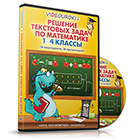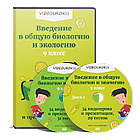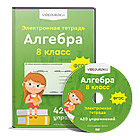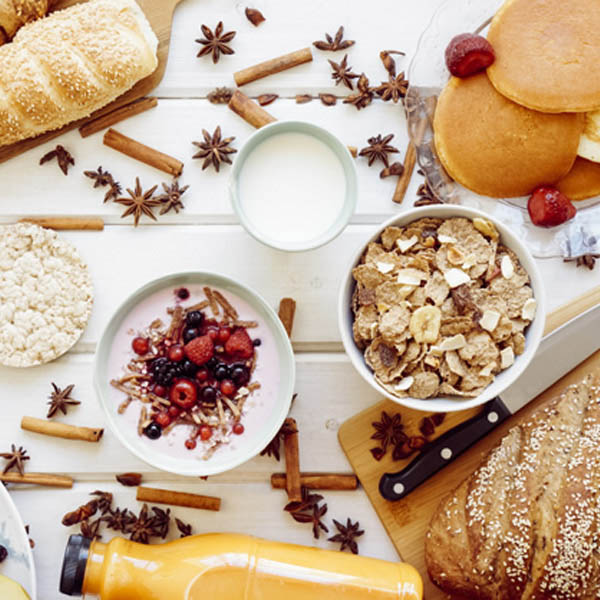ЧИГИТНИНГ ТЕХНОЛОГИК СИФАТ КЎРСАТКИЧЛАРИ ВА КИМЁВИЙ ТАРКИБИГА ДЕФОЛИАНТЛАРНИНГ ТАЪСИРИ
Ubaydullayev Madaminjon Muminjonovich
Fergana Polytechnic Institute q.x.f.f.d.(РhD)
“Табиий толалар”кафедраси мудири
E-mail: mubaydullaev6554@gmail.com tel: +99(890) 274-65-54
Қурбонова Умида Саетбековна
Fergana Polytechnic Institute
“ННГКИТ”кафедраси катта ўқитувчи
Аннотация. Энто-Дефол дефолиантини С-8290 ғўза навида 20,0-15,0 л/га меъёрда қўлланилганда 1000 дона чигит вазни дефолиация муддатларига (30-40;50-60%) мутаносиб равишда 120,8-120,9 г ни ташкил этиб, назорат вариантидан 1,3-1,4% га кўп бўлди. Чигит мойдорлиги эса назоратдан 0,5-0,3 % га (22,4-22,3 %) ортиқ бўлди.
Калит сўзлар: дефолиация ва дефолиантлар турлари, чигит мойдорлиги, оқсил ва мойдорлик даражаси.
ВЛИЯНИЕ ДЕФОЛИАНТОВ НА ПОКАЗАТЕЛИ ТЕХНОЛОГИЧЕСКОГО КАЧЕСТВА И ХИМИЧЕСКИЙ СОСТАВ СЕМЯН
Аннотация. При применении дефолианта Энто-Дефол на хлопчатнике сорта С-8290 в норме 20,0-15,0 л/га масса 1000 семян составляет 120,8-120,9 г пропорционально периодам дефолиации (30-40; 50-60%). , было на 1,3-1,4% больше, чем в контроле. Содержание масла в семенах было на 0,5-0,3% (22,4-22,3%) больше, чем в контроле.
Ключевые слова: дефолиация и виды дефолиантов, масличность семян, содержание белка и масла.
THE INFLUENCE OF DEFOLIANTS ON THE TECHNOLOGICAL QUALITY INDICATORS AND CHEMICAL COMPOSITION OF SEED
Annotation. When using the defoliant Ento-Defol on cotton variety C-8290 at a rate of 20.0-15.0 l/ha, the weight of 1000 seeds is 120.8-120.9 g in proportion to the periods of defoliation (30-40; 50-60%). , was 1.3-1.4% more than in the control. The oil content in the seeds was 0.5-0.3% (22.4-22.3%) more than in the control.
Key words: defoliation and types of defoliants, seed oil content, protein and oil content.
Enter
In recent years, providing the population with food and raw materials for industry is becoming more complicated on a global scale. Especially in the conditions of the current global financial and economic crisis, the further expansion and radical modernization of agricultural production provides an opportunity to find a solution to these issues. From this point of view, several works are being carried out at the state level in the development of this sector, including cotton growing, on the basis of specific programs, in order to increase the production of exportable products.
In addition to the creation by our scientists of early-maturing, high-yielding, cotton varieties that fully meet the requirements of the world market, resistant to diseases and pests, development of resource-saving agrotechnical measures suitable for the soil and climatic conditions of the regions, as well as for quality harvesting during the ripening period. It is important to apply cotton defoliation agro-management depending on various factors depending on the biological characteristics of varieties and to develop their optimal rate and duration.
Also, domestic and foreign scientists have proven in their research that the acceptable standards of defoliants used together with chemical fertilizers for cotton have a positive effect on the quality indicators of the seed and the forms of nitrogen.
After all, nitrogen, phosphorus and potassium fertilizers have a positive effect on the fat and proteins contained in the seed, causing the oil content of the seed to increase by 2-4%.
Research methodology.
In connection with the difficult tasks, during the past years, our research has been carried out in the meadow of the Scientific Experimental Station of the Scientific Research Institute of Cotton Selection, Seeding and Cultivation, located in the Kuva District of the Fergana Region. was carried out in the conditions of the soil. In the experiment, separate options for each variety were obtained and placed in 4 rows, 3 repetitions.
The indicated standards of defoliants used in the experiment were applied to the experimental variants, with the bolls of cotton varieties S8290, S6775, S9090, S6770 at 30-40, 45-50%, and 50-60, 60-65% opening period, and their optimal application rate and duration were determined. Scientific research at UzPITI was carried out on the basis of the adopted "Metodika polevyx opytov s xlopchatnikom" (1981), "Methods of conducting field experiments" (2007) and "Methodological guidelines for testing cotton defoliants" (1993, 1994, 2004) adopted by the State Chemical Commission of the Republic of Uzbekistan.
Research results and their discussion.
From this point of view, in the experiments of past years in the conditions of meadow-swamp soils of Fergana region, in addition to the effect of defoliants on fiber quality indicators, seed quality indicators, i.e., seed weight of 1000 pieces, germination capacity, fertility, maturity level, moisture and kernel yield, total, protein content of seed and protein-free nitrogen amounts were also determined.
In our research, compared to S-8290 cotton variety, S-6775 cotton variety has slightly higher 1000 seed weight and moisture level. Consequently, the weight of 1000 seeds in the S-8290 cotton variety control options was 119.5-119.7 g in proportion to the defoliation period, while in the S-6775 cotton variety control option, this indicator was 123.6-123.9 g, respectively. formed the whole.
In the case of liquid XMD (8.0 l/ha), the weight of 1000 seeds was equal to that of the control option or 0.1 g less, that is, up to 118.5-118.7 g in proportion to the defoliation period in S-8290 cotton variety, S-6775 in the cotton variety, it was about 123.6-123.9 g, respectively. In these variants, the seed oil content is also 0.1-1.1% (20.8-20.9; 22.1-22.2) of the control variant (21.9-22.0; 22.2-22.3 g) g) was less. This, in turn, indicates that the defoliant has a strong effect on the young follicles, forcing them to open (incomplete opening).
Entodefol defoliant was used in different rates (10.0-15.0-20.0 l/ha) among the variants, as in the above laws, in S-8290 and S-6775 cotton varieties, when the bolls were opened by 30-40%, Entodefol was applied at 20.0 l/ha 50- At 60% opening, good results were obtained when applied at a rate of 15.0 l/ha. For example, when Entodefol is applied at the rate of 20.0-15.0 l/ha in the S-8290 cotton variety, the weight of 1000 seeds is 120.8-120.9 g in proportion to the defoliation periods (30-40; 50-60%). was 1.3-1.4% more than the control variant. Seed oil content was 0.5-0.3% (22.4-22.3%) more than the control.
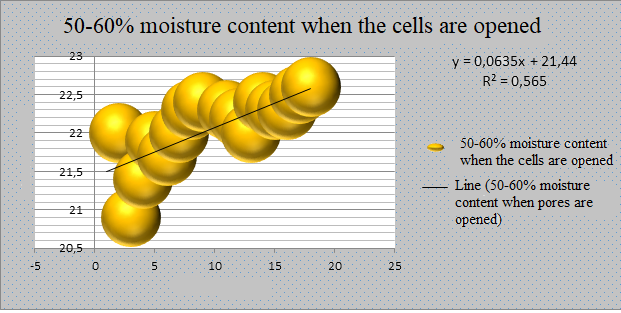
Figure 1. Effect of defoliants on seed quality indicators.
In the S-6775 cotton variety, the weight of 1000 pieces of seed was 125.8-126.0 g, which was 2.3-2.2 g more than the control, and the seed oil content was 22.2-22.3%. It turned out to be high around 0.5-0.2%.
Significantly, we can see that the 1000 seed weight and oil content of cotton variety S-6775 is slightly higher than that of cotton variety S-8290. This is proof that the variety is biologically different from each other.
In other words, the indicators of germination capacity, germination, maturity level of the seed did not differ much from the control options, but it was equal to it or a little more or less by 0.8-0.5%. These indicators indicate that the biological value of the seed in this aspect does not differ sharply in positive or negative direction.
However, it should be noted that the biological value of the seed of agricultural crops is determined by the amount of kernel in its seed. Because the amount of kernel in the seed is a necessary source of nutrients for the healthy growth and development of the sprout (Teshaev 2008).
According to the results of the conducted research, it was observed that in all defoliated variants, except for SuyuqXMD defoliant, seed yield did not decrease.
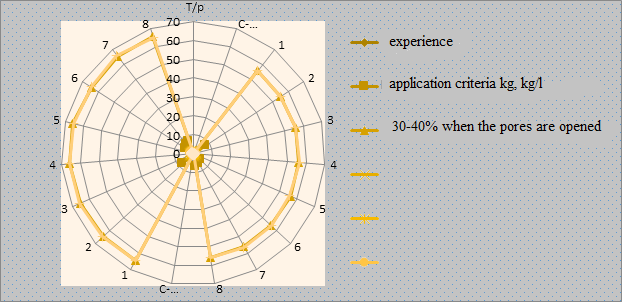
Figure 2. Effect of defoliants on seed quality indicators.
In the control version of the S-8290 cotton variety, the yield of kernels was 55.4-55.5% in proportion to the periods of defoliation application (30-40; 50-60%), while in the version where SuyuqXMD (8.0 l/ha) was used, this indicator It decreased by 0.4-0.3% and amounted to 55.0-55.2%. When Entodefol is used at the rate of 10.0-15.0-20.0 l/ha, this indicator is 55.7-55.9-56.1, respectively; 56.1-56.3-55.8%, the highest result was obtained from the variant using Entodefol 20.0-15.0 l/ha and was 56.1-56.3%, respectively.
It should be said that in background 2 (50-60%) slightly lower standards of defoliants showed good results, i.e., in the options where EntoDefol 0.150 l/ha and FanDEF-excellent 6.0 l/ha were used, the indicators were 95.1-90.0, respectively; 38.7-34.8; 22.0-16.9%; 21.8-17.9; 22.0-16.9; It was 8.3-4.4%. Another reason for this result is that during this period, the content of cotton and seed in cotton was almost full, and natural sunlight, heat and light had a positive effect, and the low rate of defoliants we used was also natural. it was also positive enough for the seeds that could not fully assimilate the factors.
The following conclusions can be made based on the results of scientific research conducted in the conditions of meadow-swamp soils of Fergana region.
CONCLUSIONS.
In general, in the conditions of the grassland soils of the Fergana region, cotton bolls are 30-40 in S-8290 and S-6775 cotton varieties; The pods of the defoliated variants at 50-60% opening (especially at 50-60% opening) efficiently used the heat of the sun (30-35 С0) and light, and a slight increase in fat (kernel) and proteins was found.
In conclusion, it can be said that the use of Entodefol and FanDEF-excellent defoliant in acceptable standards in S-8290 and S-6775 cotton varieties grown in the conditions of meadow-swamp soils of Fergana region does not worsen the biological and chemical properties of the next generation seeds. On the contrary, it was found that the quality of the seeds under the influence of defoliants was equal to or slightly higher than the control.
Used literature
1. Ubaidullayev, M. M. (2022). NEW DEFOLIANTS PRODUCTIVITY BONDS. Archive of Science, 2(1).
2. Mominjonovich, U. M. (2022). Effectiveness Of Defoliants. Eurasian Research Bulletin, 8, 9-12.
3. Mominjonovich, U. M., & Ogli, M. I. V. (2022). STUDY AND ANALYSIS OF TECHNOLOGICAL PROCESSES OF COTTON DRYING IN A CLUSTER SYSTEM. International Journal of Advance Scientific Research, 2(11), 6-10.
4. Ubaydullaev, M. M., & UT, T. (2022). DETERMINATION OF APPROPRIATE NORMS AND TERMS OF DEFOLIANTS. American Journal Of Applied Science And Technology, 2(05), 18-22.
5. Ubaydullaev, M. M., & Makhmudova, G. O. (2022). MEDIUM FIBER S-8290 AND S-6775 COTTON AGROTECHNICS OF SOWING VARIETIES. European International Journal of Multidisciplinary Research and Management Studies, 2(05), 49-54.
6. Ubaydullaev, M. M., & Komilov, J. N. (2022). EFFECT OF DEFOLIANTS FOR MEDIUM FIBER COTTON. International Journal of Advance Scientific Research, 2(05), 1-5.
7. Ubaydullaev, M. M., & Mahmutaliyev, I. V. (2022). EFFECTIVENESS OF FOREIGN AND LOCAL DEFOLIANTS ON THE OPENING OF CUPS. International Journal of Advance Scientific Research, 2(05), 6-12.
8. Ubaydullaev, M. M., & Sultanov, S. T. (2022). DEFOLIATION IS AN IMPORTANT MEASURE. European International Journal of Multidisciplinary Research and Management Studies, 2(05), 44-48.
9. Ubaydullaev, M. M., & Nishonov, I. A. (2022). The Benefits of Defoliation. Eurasian Journal of Engineering and Technology, 6, 102-105.
10. Ubaydullayev, son of Madaminjon Mominjon, & Marufjanov, son of Abdurahmon Mosinjon. (2022). BIOLOGICAL EFFICIENCY OF FOREIGN AND LOCAL DEFOLIANTS. "Science and innovation" international scientific journal, 1(2). https://doi.org/10.5281/zenodo.6569808
11. Ubaidullayev, M. M. (2021). Acceptable norms and periods of defoliation in cotton. Monograph.-Corresponding standards and terms of deflation of cotton. Monograph. Sootvetstvuyushchie normy i sroki defoliatsii klopka. Monograph. Zenodo.
12. Ubaidullaev, M. M. (2020). The importance of sowing and handling of c-8290 and c-6775 seeds in the conditions of the meadow soils of the Fergana area. In International conference on multidisciplinary research (p. 11).
13. Ubaidullayev, M. M., & Nematova, F. J. (2021). The importance of planting and processing of medium-yield cotton varieties between cotton rows in Fergana region. The American journal of agriculture and biomedical engineering. USA, 3(09).
14. Teshaev, F. J., & Ubaidullaev, M. M. (2020). Determination of the effective norm of new defoliants and the conditions of the soil of the Fergana region at the opening of the box of 50-60% of the khlopchatnika s8290 and s6775. Actual problems of modern science, (5), 62-64.
15. Mominovich, U. M. (2021). The Importance Of Planting And Processing Of Medium-Field Cotton Varieties Between Cotton Rows In Fergana Region. The American Journal of Agricultural and Biomedical Engineering, 3(09), 26-29.
16. Ubaidullayev, M. M., Nematova, F. J., & Marufjonov, A. (2021). Determination of efficiency of defoliation in medium-fiber cotton varieties. Galaxy International Interdisciplinary Research Journal, 9(11), 95-98.
17. Ubaidullaev, M. M. U., Askarov, K. K., & Mirzaikromov, M. A. U. (2021). Effectiveness of new defoliants. Theoretical & applied science Uchrediteli: Teoreticheskaya i prikladnaya nauka, (12), 789-792.
18. Usmanov, J. M., Shakirov, S. M., Ubaidullayev, M. M., & Parmonov, S. O. (2021). Aluminum-based composition materials for processing aluminum scrap. ACADEMICIA: An International Multidisciplinary Research Journal, 11(8), 590-595.










